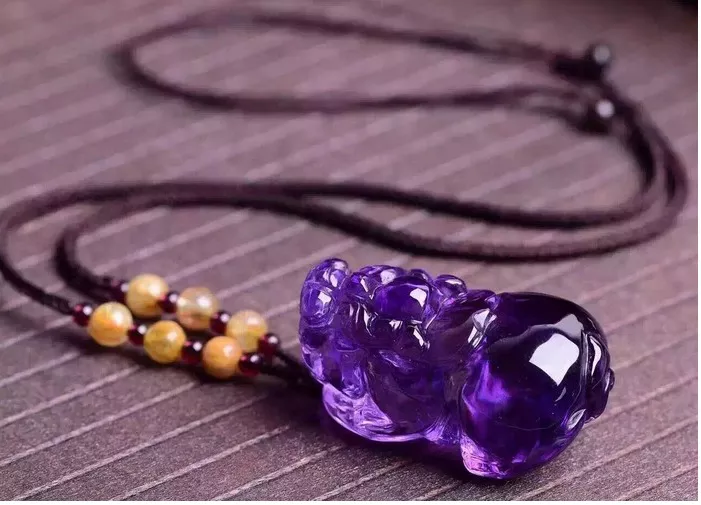Amethyst, a captivating gemstone prized for its mesmerizing purple hues and purported metaphysical properties, has long been revered for its beauty and purported healing energies. Among its many uses, placing amethyst in water is a popular practice believed to enhance its beneficial effects. However, concerns about the safety of immersing this gemstone in water persist among enthusiasts and skeptics alike. In this comprehensive guide, we delve into the question: Is it safe to put amethyst in water?
Amethyst’s Resilience in Water:
Before delving into the safety considerations, it’s crucial to understand the physical characteristics of amethyst. As a variety of quartz crystal, amethyst boasts a notable hardness level of 7 on the Mohs scale, making it relatively durable compared to other gemstones. This inherent resilience suggests that amethyst can withstand exposure to various environmental conditions, including water.
Short-term exposure to plain water is unlikely to harm amethyst. Its robust composition renders it resistant to immediate damage, allowing it to maintain its lustrous appearance and energetic properties when submerged briefly. However, prolonged exposure to certain types of water may pose risks to the gemstone’s integrity.
Cleansing Techniques:
Water is a popular natural element used for cleansing amethyst crystals. To cleanse your amethyst, simply immerse it in a bowl of clean, room-temperature water. It is recommended to let the amethyst soak for several hours or overnight to allow the water to absorb any negative energies or impurities from the crystal.
After cleansing, remove the amethyst from the water and gently pat it dry with a soft cloth or let it air dry naturally. Avoid using harsh chemicals or cleaners, as these can damage the surface of the crystal.
Types of Water to Use and Avoid:
When considering immersing amethyst in water, the choice of water type is paramount to ensuring the gemstone’s safety and longevity. Here’s a breakdown of suitable and unsuitable water options for amethyst:
Freshwater, Spring Water, and Regular Tap Water: These types of water are generally safe for amethyst. They do not contain components that would actively harm the gemstone or compromise its structural integrity.
Ocean Water: While ocean water is often hailed for its energetic cleansing properties, it contains salt components that can potentially damage amethyst over time. Direct and prolonged exposure to salt water may lead to surface erosion or corrosion, diminishing the gemstone’s aesthetic appeal and energetic efficacy.
If opting to use ocean water for cleansing purposes, it is advisable to limit the duration of exposure. A brief dip followed by thorough rinsing with fresh water can mitigate the risk of salt-induced damage. However, regular use of ocean water for prolonged periods should be avoided to preserve the gemstone’s pristine condition.
Bath Water and Self-Care:
One popular application of amethyst in water involves incorporating the gemstone into bath rituals to promote relaxation and rejuvenation. Here are some considerations for safely integrating amethyst into bath water:
Adding Amethyst to Bath Water: The serene ambiance created by a bath infused with amethyst can enhance the overall bathing experience. Amethyst’s calming energies are believed to promote stress relief and emotional balance, making it an ideal companion for relaxation rituals.
Avoiding Harmful Bath Products: While amethyst can complement various self-care practices, it is essential to exercise caution when selecting bath products. Harsh chemicals, such as those found in certain bath salts or additives, may adversely affect the gemstone’s appearance or energetic properties. Opt for gentle, natural bath products that won’t compromise the integrity of the amethyst.
Enhancing Calming Properties: Placing amethyst near the bath or shower area can amplify its calming properties, creating a tranquil atmosphere conducive to relaxation and self-reflection. Whether in the form of clusters, tumbled stones, or decorative accents, incorporating amethyst into the bathing environment can imbue the space with a sense of serenity and harmony.
In conclusion, the safety of putting amethyst in water largely depends on the type of water used and the duration of exposure. Amethyst’s inherent resilience and hardness make it generally safe for short-term immersion in freshwater, spring water, or regular tap water. However, caution should be exercised when exposing amethyst to salt water, such as ocean water, to prevent potential damage over time. Incorporating amethyst into bath rituals can enhance the self-care experience, but it’s essential to avoid harmful bath products that may compromise the gemstone’s integrity. By understanding these considerations and adopting mindful practices, enthusiasts can enjoy the beauty and benefits of amethyst in water while preserving its timeless allure for generations to come.


